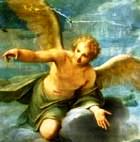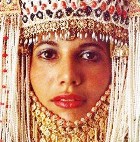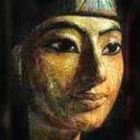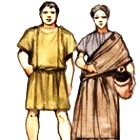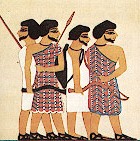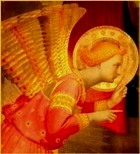Who was Abraham in the Bible?
What’s the evidence for his story?
According to the Bible, Abraham was a successful trader and herdsman who left his native city, Ur, during a period of upheaval in the 20th or 19th centuries BC. He and his wife Sarah went looking for fresh pastures and a new country.
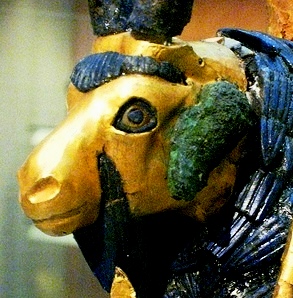
The ram excavated at Ur
Their journey took them along an ancient trade route from the Mesopotamian valley up the Euphrates River to Haran and then south, down to Canaan. You can read his story at Genesis 12:1-20 – 22:1-24.
The question a modern reader might ask is:
Is this story really true? What evidence do we have that it happened in the way the Bible says it did?
Item 1 – the ram in the thicket
So let’s look at the Bible text for one part of Abraham’s story – the story of the ram caught in the thicket, when Moses offered a sacrifice to God: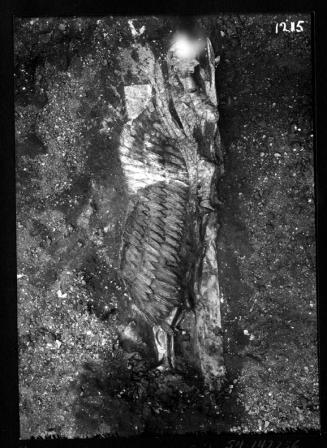
‘…and Abraham looked up and saw a ram, caught in a thicket by its horns. Abraham went and took the ram and offered it up a a burnt offering instead of his son’ (Genesis 22:13).
This Bible quote from the Book of Genesis echoed in the mind of Leonard Woolley, a famous archaeologist, when he discovered the ‘Great Death Pit’ at Ur, the city where Abraham lived before he travelled to Canaan.
In the pit he found a pair of statuettes, gold and lapis lazulae, dating from about 2600-2400 BC, showing what looked like a goat or ram caught in the branches of a golden bush.
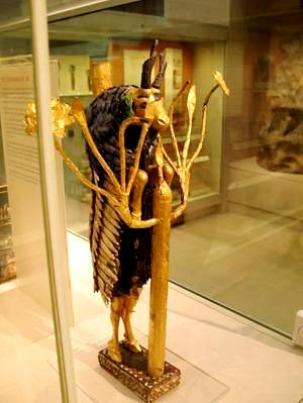 Woolley thought there might be a connection between these objects and the story of Abraham and Isaac.
Woolley thought there might be a connection between these objects and the story of Abraham and Isaac.
Judging by the horns and coat of the animal in the statuette, it is more likely to have been a goat – an animal noted for its endurance and sexual potency.
When found, the statuette had been crushed flat by the weight of the soil.
The animal’s head and legs were covered in gold leaf, its ears were copper, its twisted horns and the fleece on its shoulders were of lapis lazuli and its body fleece made of shell. Its genitals are gold, suggesting they were an important feature of the symbolism behind this object.
The tree is covered in gold leaf, with golden flowers. A tube rising from the goat’s shoulders suggests it was used to support something, perhaps a bowl.
The ‘ram’ or goat is shown reaching up to nibble at the branches of a shrub or bush – a common sight in the ancient Near East.
Item 2 – journeys of the Hebrews – Egypt
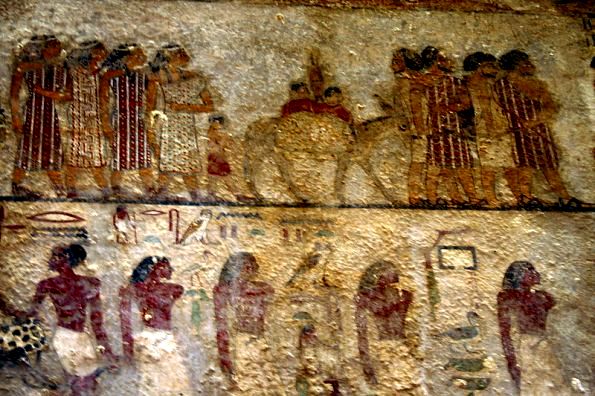
(Above & below) Segments of the Beni-Hasan mural, Egypt
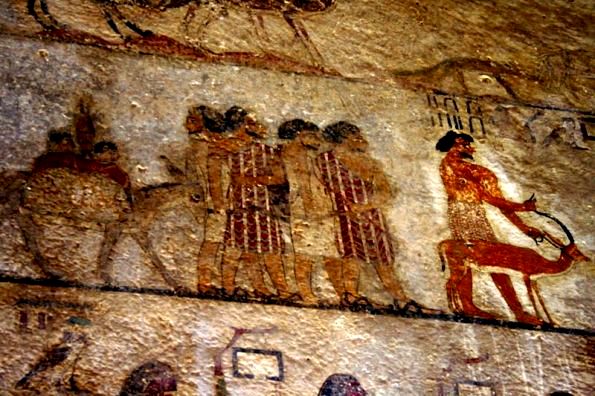
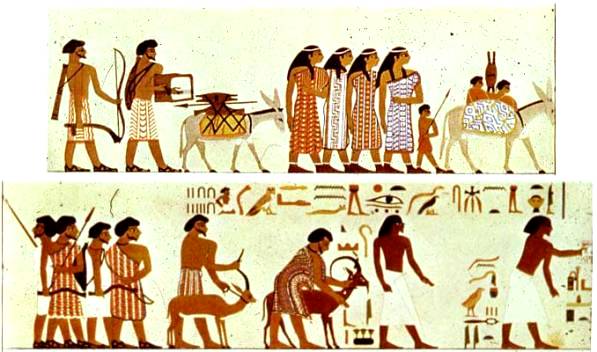
Detailed drawing of part of the Beni Hasan mural, Egypt
Above is a mural from Beni Hasan in Egypt, dated at circa 1890BC. It is located on the north wall of a tomb dedicated to the Egyptian Pharaoh Sesosotis II, but belonged to the local governor of the time, Khnum-Hotep.
One of the murals, on the north wall of the main chamber, shows a band of nomadic merchants who have traveled from Syria-Canaan to Egypt.
Is this something like the journey of Joseph’s brothers?
The images in the murals depict different aspects of life in ancient Egypt, and this particular mural probably depicts a band of foreign traders who passed frequently through the area. The Egyptians referred to these people as ‘Asiatics’.
The ancient Egyptian caption above the scene described ‘the arrival, bringing a gift of stibium (a mineral used as a cosmetic for painting the eyes) of thirty-seven Asiatics’. The caption in front of the leader of the ‘Asiatics’ identifies them as being from a foreign country called ‘Ibsha’.
The painting at Beni Hasan is valuable because it gives us an idea of how Abraham’s clan would have dressed and looked. Note the women’s headbands, the the style of clothing of both sexes, the short beards of the men, their animals, weapons and tools.
Item 3 – Abraham’s God – and ziggurats
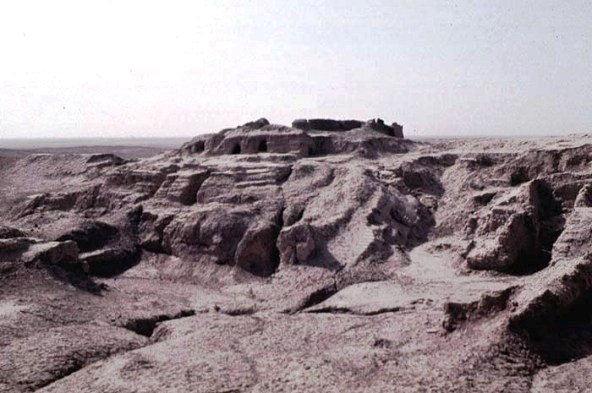
The Ziggurat of the god Anu at Uruk now reduced by time and erosion to a formless mound. The stairway ramp for the ziggurat is at right center.
Abraham probably saw this ziggurat when it was still intact.
Anu was the god/power that ruled the sky – a Mesopotamian deity worshipped at the time that Abraham lived in Ur.
The outer shell of the ziggurat at Ur has been reconstructed (see below), giving an idea of how it would have looked when Abraham was alive. The plane is from a nearby American air base.
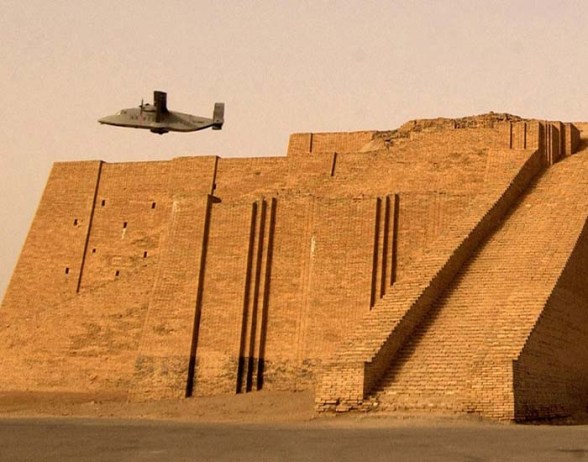
The reconstructed ziggurat at Ur
As far as we know, ziggurats were meant to connect the earth and the cosmos beyond it, a sort of platform from which the gods could be contacted. Each ziggurat was topped by a shrine, used only be priests and priestesses who were servants of the god.
Around the ziggurate was a temple complex probably, as in Egypt, including temples, sacred colleges and schools, storage rooms, a large open courtyard, and living quarters for the servants of the god.
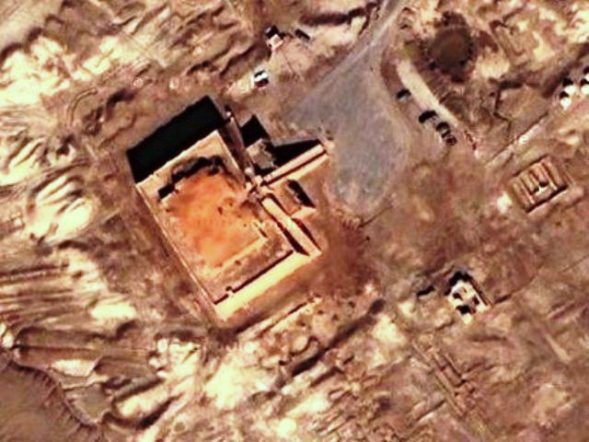
Aerial view of a ziggurat, showing remains of carefully planned buildings surrounding the main area
Why have ziggurats?
Archaeologists suggest that worship of particular gods originated in the mountains to the north of Sumeria. When people settled in the flat plains around the Tigris and Euphrates, they simulated mountain worship by building earth mounds like the hills and mountains they had come from.
They then carried this practice with them as they spread throughout the Middle East – notably in ancient Canaan/Israel. This was the origin of the ‘high places’ that the priests of Yahweh hated.
Item 4 – The seal – ancient identity card
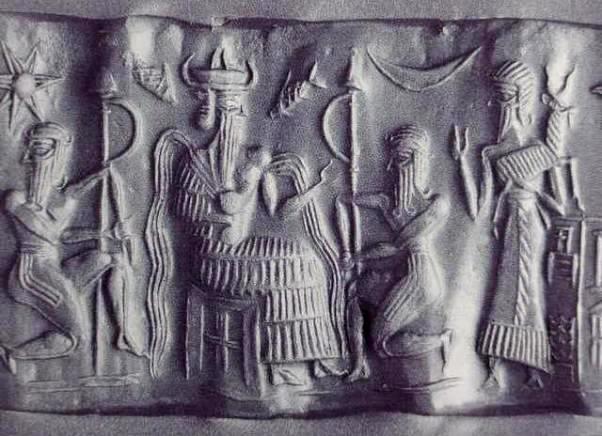
Impression from a clay seal showing the god Enki, from whom rivers of water flow
Abraham’s clan came from a society (ancient Mesopotamia) with a rigid social structure and sophisticated religious mythology.
But by the time that he left, this culture was in decline. Nevertheless, Abraham would certainly have been aware of the sacred stories of the Mesopotamians.
This seal shows the water god Enki, identified by the streams of water that gush from his upper body. It would once have been the prized possession of a high official or a monarch.
Abraham, as leader of his tribal group, would have had his own seal, and probably also a carved wooden staff with figures and signs representing tribal history.
His great-grandson Judah bartered his own seal and staff as a pledge of payment for the services of a prostitute, unaware that the prostitute was his daughter-in-law Tamar. See the story in Tamar, Bible Woman.
Given the importance of his seal and staff, this was an extraordinary gesture on Judah’s part.
Item 5 – Golden finial, Iran
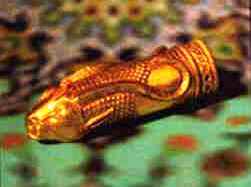
Golden finial from Iran
This beaten gold finial from Iran (see right), which was probably the top of a ceremonial staff, has the face and horns of a ram.
Rams were notorious for their sexual appetite, and were probably sacrificed to encourage the forces of Nature to give abundant crops.
Abraham substituted a ram for his own son, as a sacrifice to Jahweh (see Genesis 22). This story has echoes of ancient practices: child sacrifice and worship of the fertility gods.
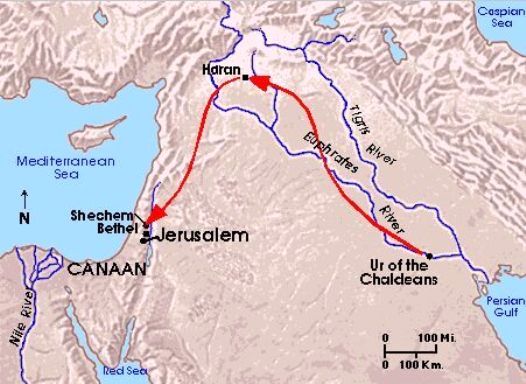
This is a possible route taken by Abraham and Sarah as they travelled from their native land, ‘Ur of the Chaldees’, to Canaan.
Search Box
![]()
© Copyright 2006
Elizabeth Fletcher

